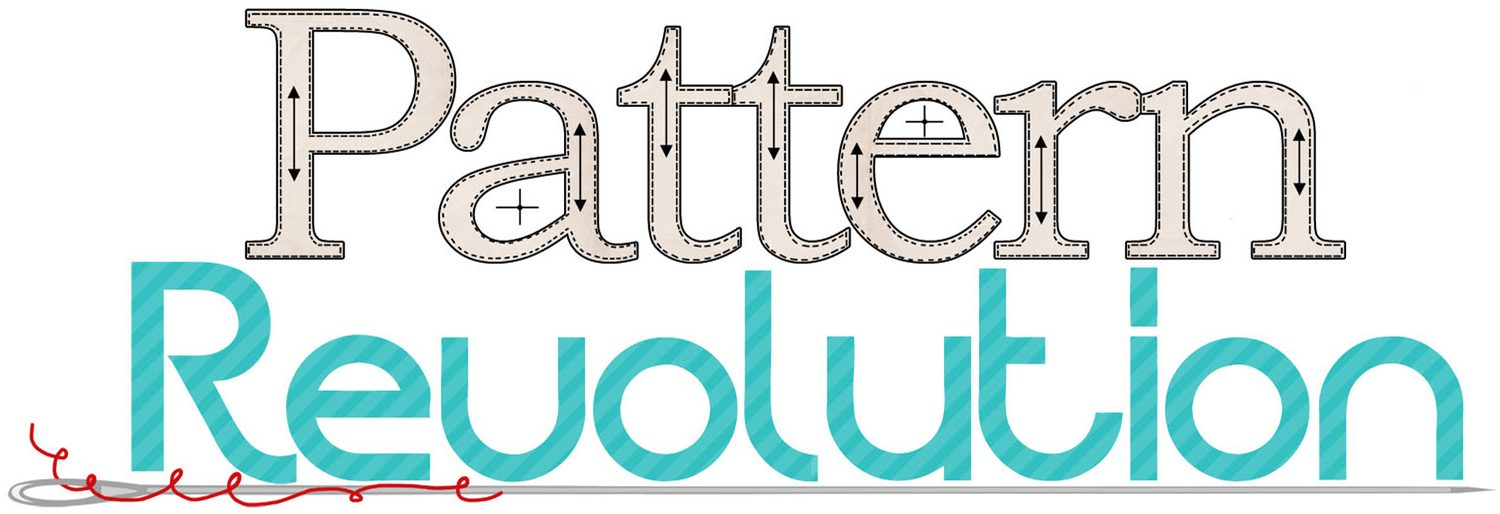Making your pants adjustable with button hole elastic
/My Little Plumcake is a Pattern Revolution Blog Sponsor. This pattern was provided to me for free for use in this tutorial. Want to win a free copy for yourself? Enter the giveaway at the end of this post!
Whenever I (gasp!!!) buy store bought clothes for my kids, I always make sure to get pants with buttonhole elastic, especially for my oldest boy since the hand me downs go to little brother who is not shaped quite the same. I've recently sewed a couple patterns that included buttonhole elastic in the waistband (Retro Glam Skirt and Otto Pants). I decided that I'll probably use it in most every pants pattern I sew from now on to make sure I can get the perfect fit throughout the life of the garment, no matter who is wearing it. As long as I'm doing it, I might as well show you how too, right?
First, there are a couple things to consider with the pants you are going to modify- do the pants have a flat front or is entire waistband elasticized? Do the pants have a separate waistband piece or is the top of the pants turned down to make a casing?
Today I'm working with the Jack and Jill Pattern from My Little Plumcake. They have a flat front and do not have a separate waistband, but if your pattern is different, I'll give you some tips at the end so you can still make the modifications. By the way, this pattern is designed to be fitted through the waist and butt and flare towards the bottom, but my kids both needed more booty room so I sized up.
First, assemble the pant fronts and backs as directed in the pattern. Do not sew the inseam or side seams yet. Now it's time to mark your buttonholes.
The pattern directs you to turn the waistband under 1/2" and then another 1" to create your casing. You want your buttonholes to end up on the inside of the waistband centered on the casing, so you measure 5/8 down from the top of the pants, and measure 1" in from the side seam on each side. Mark your buttonholes.
Turn your pants piece over and transfer your marks on the back side, then apply 2 small pieces of iron on interfacing over each buttonhole mark.
Turn your pants back over and make your buttonholes using your sewing machine.
Don't forget to open your buttonholes with your seam ripper now! It's hard to do it once the casing has been sewn down! Continue now with the pants construction according to the pattern directions. When your pants are together, make the casing as directed.
Instead of stopping, sew all the way around the casing.
Add your buttons!
Using a safety pin, feed the buttonhole elastic through the buttonhole, into the back side casing, and back out the other buttonhole.
Try the pants on your little one, adjust the elastic as needed, and secure with the buttons. How easy was that???
So, a few things to keep in mind... All patterns are different. If you are using a different pattern that does not have a separate waistband, remember to check how much the casing is turned under (if at all). This measurement determines your buttonhole placement, and you're going to want to add 1/8" to that # and that is how far you measure down from the top of the pants to begin your buttonhole mark.
If your pants have a separate waistband, you will need to center the buttonholes on the inside of the waistband piece using the same methods.
If your pants do not have a flat front and are elasticized all the way around, you only need one buttonhole. Insert the elastic, pull it through the casing so that the end of the elastic is right next to the button hole, place the button on the fabric directly on top of the end of the elastic and sew it down, securing both the button on the outside and the elastic on the inside. Pull the other end of the elastic the rest of the way through the casing and out the button hole and secure with button.
I hope you found this helpful, Happy Sewing! Now, Enter to win a copy of this pattern for yourself!






















